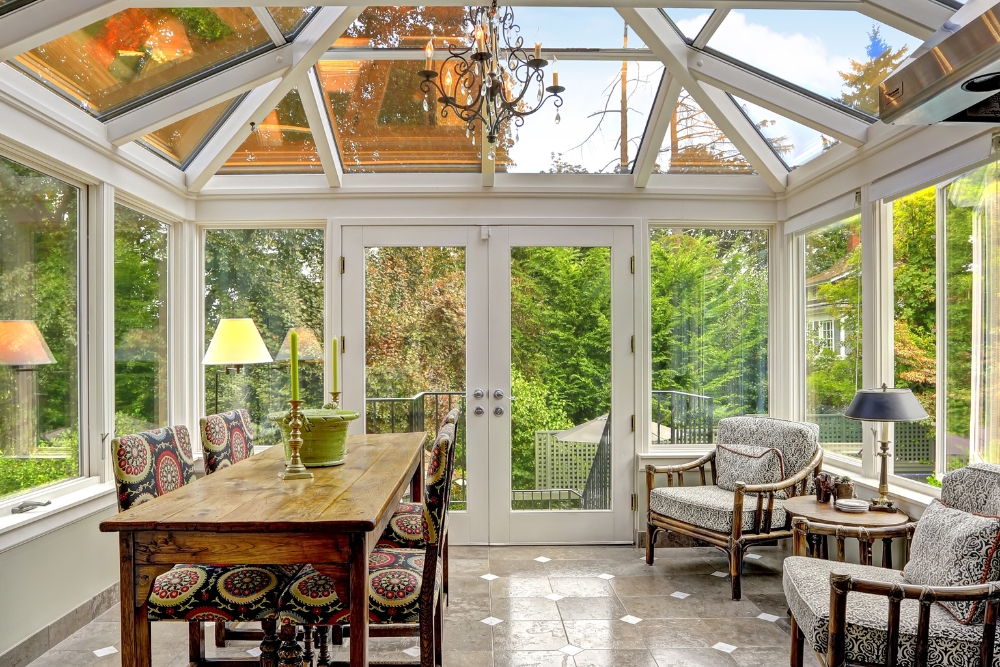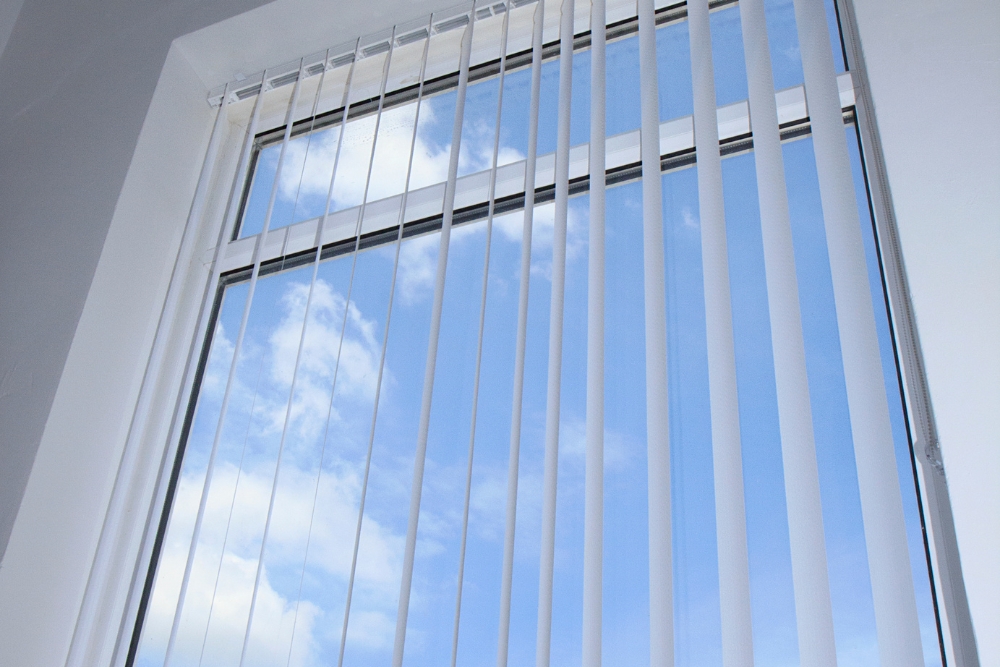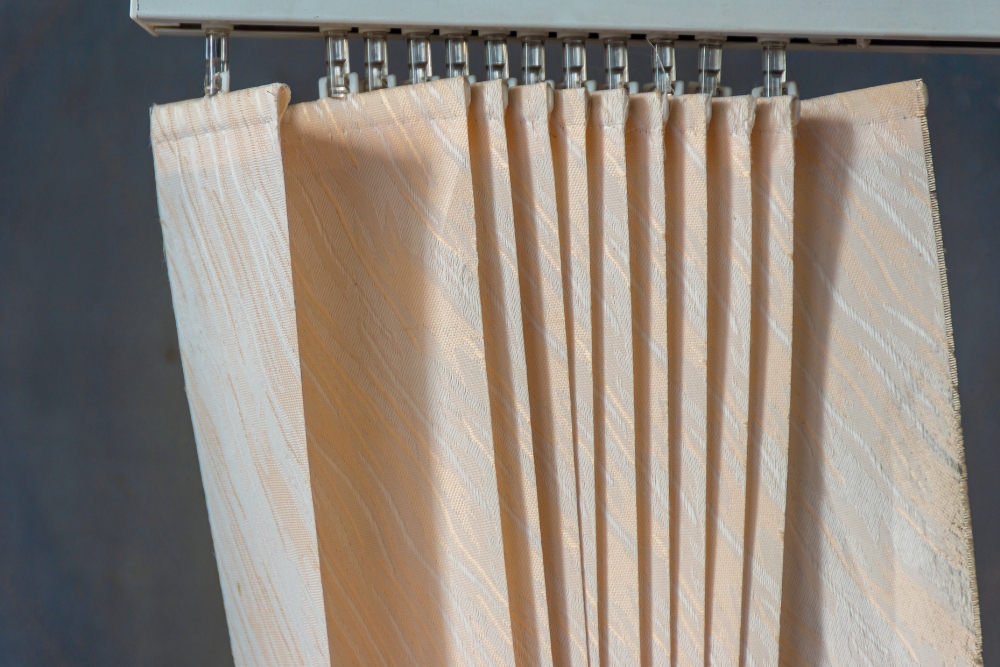Ever found yourself doing a bit of a dance with your blinds, trying to keep that relentless sun at bay? You’re not alone – plenty of us have had our fair share of battles against that blinding glare.
But here’s where smart glass windows and smart screens come into play, offering the power to dial down the dazzle and potentially slash our heating and cooling costs by up to 20%. Ready to give your window worries the flick? Let’s take a squiz at just how these nifty panes could completely reshape your living space! Hang about – you’re on track to uncover some crystal-clear perks!
Key Takeaways
- Smart glass windows can transform from clear to opaque at the touch of a button, using advanced tech like electrochromic devices and conducting polymers.
- These high-tech windows better manage sunlight and temperature, potentially cutting heating and cooling costs by up to 20% while boosting privacy.
- Types of smart windows include internal, external, safety glass, and retrofit options that blend with existing structures for a modern upgrade.
- Energy efficiency is a top benefit; smart window solutions minimise the need for artificial lighting and climate control systems.
- Smart windows support sustainable building design strategies such as reducing greenhouse gas emissions and promoting energy-saving ventilation methods.
What is Smart Glass Windows?
Smart glass windows are a revolutionary technology that allows users to switch the window from transparent to opaque with just a touch of a button. This is made possible through conducting polymers and enhanced lignin extraction, making them an innovative addition to any home or office.
Basic principle of electrochromic and energy conversion device
We love the way our living spaces are evolving, especially with smart window technology applications. Just imagine your windows dimming themselves on a blazing hot day or turning transparent at the flick of a switch.
This magic happens thanks to electrochromic devices embedded in glass that change colour when electricity is applied. These clever tools use ions moving between layers of material inside the glass – it’s like the glass has its built-in sunglasses!

Energy conversion goes hand in hand with this tech, as self-powered smart windows harvest energy from sunlight to fuel their adjustments. They capture light and convert it into electrical power, so we can say goodbye to manual blinds and welcome controllable glazing that responds automatically to keep our homes comfortable without lifting a finger. And there you have it – cutting-edge solutions providing both privacy and climate control wrapped up neatly in our intelligent displays!
Conducting polymer
Smart glass windows utilise conducting polymers, which are materials that can change their optical properties in response to an electrical stimulus. This means that they can switch between transparent and opaque states with the application of a small electric current.
These conducting polymers allow for adjustable light transmission, heat regulation, and privacy control within the window pane. By integrating this technology into your home or office space, you can have more control over natural lighting and temperature while also enhancing privacy as needed.
In addition to their functional benefits, conducting polymer-based smart windows contributes to energy efficiency by reducing the need for artificial lighting and heating or cooling systems.
Enhanced lignin extraction and optimisation from oil palm biomass
To improve the sustainability of our window solutions, we focus on enhancing lignin extraction and optimisation from oil palm biomass. This process allows us to utilise natural resources effectively and reduce the environmental impact of producing smart glass windows.
By maximising the use of oil palm biomass, we can create more eco-friendly smart windows that contribute to a greener future for our homes and offices.
Incorporating advanced technology with sustainable practices ensures that our window solutions are not only innovative but also environmentally responsible. Our commitment to optimising lignin extraction from oil palm biomass enables us to offer cutting-edge smart glass windows that align with both technological advancements and ecological considerations, providing a balanced approach for homeowners and office owners seeking efficient and sustainable window solutions.
Types of Smart Windows
When it comes to smart windows, there are various types available for different needs and preferences. From internal and external options to safety glass and retrofit solutions, the range of choices ensures that every space can benefit from this advanced technology.
Internal and external
Smart windows come in both internal and external options. Internal smart windows are designed to be installed inside the building, offering a range of innovative features such as privacy control, light and heat management, and interactive display capabilities.
External smart windows, on the other hand, can actively regulate solar heat gain and glare from outside the building. Both types of smart windows provide energy efficiency benefits while enhancing occupant comfort.
Installed within the interior space or integrated into the facade of a building, these cutting-edge window solutions offer advanced functionalities that cater to diverse needs in residential homes and commercial properties.
Safety glass
Manufacturers design safety glasses to reduce the risk of injuries from shattered or broken glass. Laminated glass layers a piece of polyvinyl butyral (PVB) between two layers of glass, keeping the pieces together when shattered.
Toughened or tempered glass undergoes a heating and rapid cooling process, leading to increased strength and resistance to breakage. Both types are ideal for smart window solutions because they enhance security and protect against potential hazards.
Smart windows with laminated or toughened safety glass provide an added layer of protection for homes and offices while integrating cutting-edge technology for improved energy efficiency and occupant comfort.
Retrofit options
When considering retrofit options for your windows, it’s important to evaluate the existing window structure and determine the most suitable smart screen technology for integration.
Upgrading traditional windows with smart glass solutions can provide benefits such as improved energy efficiency, enhanced occupant comfort, and modern aesthetic appeal. Retrofitting options may include applying switchable film technology to existing windows or installing new smart glass panels that offer advanced features like IoT integration and self-powered capabilities.
It’s essential to consult with a professional to assess the feasibility of retrofitting smart window solutions based on your specific requirements and building design.
By exploring retrofit options for integrating smart glass technology into your existing windows, you can unlock opportunities to enhance energy efficiency, regulate indoor comfort levels, and bring innovative digital window solutions into your home or office space.
Investigating retrofit possibilities allows you to leverage advanced technologies like colour-changing glass or connected screens without having to completely replace your current window infrastructure.

Benefits of Using Smart Windows
Smart windows offer energy efficiency, occupant comfort, and cost savings. To learn more about the benefits of smart windows, keep reading!
Energy efficiency
Smart windows offer significant energy efficiency by controlling the amount of light and heat that enters a building. This feature reduces the need for excessive air conditioning or heating, leading to lower energy consumption and cost savings.
With self-powered smart windows and switchable technology, these window solutions provide an innovative way to manage indoor temperatures and lighting without solely relying on traditional HVAC systems. Integrating smart windows into your home or office can reduce reliance on artificial lighting during the day, maximising natural light while minimising heat gain from direct sunlight.
Occupant comfort
To enhance occupant comfort, smart windows offer precise control over light and heat entering a space. Users can effortlessly adjust the level of natural sunlight and regulate indoor temperature to create a more comfortable environment.
With self-powered smart windows, owners can enjoy these benefits without sacrificing convenience or energy efficiency.
Furthermore, the integration of touchscreen solutions allows for seamless operation and customisation based on personal preferences. These high-tech window solutions not only contribute to creating a comfortable living or working environment but also elevate the overall user experience in modern buildings.
Cost savings
Smart windows offer significant cost savings by reducing the need for heating, cooling, and artificial lighting. By controlling the amount of sunlight and heat entering a building, smart windows help regulate indoor temperatures, thus lowering energy consumption and utility bills.
Additionally, these advanced window solutions reduce HVAC maintenance costs due to less strain on climate control systems.
The integration of smart windows also enhances the overall value of a property. The long-term benefits of lower energy costs translate into substantial savings over time, making them an attractive investment for both residential and commercial buildings.
Smart Windows and Sustainable Building Design
Smart windows have the potential to contribute to net-zero energy buildings and sustainable building design, offering benefits like reducing energy consumption and enhancing natural daylighting.
Integrating smart windows into building design can also lead to climate co-benefits and sustainable ventilation strategies.
Potential for net-zero buildings
Smart windows play a crucial role in achieving net-zero energy buildings. By integrating self-powered smart windows into building design, property owners can significantly reduce the overall energy consumption of their properties.
These advanced windows effectively control light and heat, leading to improved energy efficiency and reduced reliance on traditional heating and cooling systems. As we strive towards sustainable living, the integration of smart windows is an impactful step towards creating environmentally friendly and cost-effective buildings.
The use of self-powered smart windows can revolutionise how we approach building design and energy consumption. With innovative technology integrated within our window solutions, property owners have the opportunity to contribute to a more sustainable future while reaping long-term benefits for their properties.
Integration into building design
Integrating smart windows into building design maximises their energy-saving potential. Building orientation and window placement optimise natural light, heat control, and visibility.
This integration also allows for seamless incorporation with intelligent systems such as lighting, HVAC, and security for a holistic approach to building automation.
Incorporating smart windows into your building’s design enhances its aesthetic appeal while promoting sustainability. Integrating these innovative solutions can significantly reduce the environmental impact of buildings by lowering energy consumption and improving occupant comfort.
Life cycle assessment
Smart glass windows offer more than just energy efficiency and occupant comfort. A life cycle assessment of smart windows allows for a comprehensive evaluation of their environmental impact from the production stage to disposal.
This assessment considers factors such as raw material extraction, manufacturing, installation, usage, and end-of-life disposal. By integrating life cycle thinking in window solutions, we can make informed decisions that contribute to sustainable building design and reduce environmental impact.
Considering the full life cycle of smart windows is crucial for making sustainable choices in building design. Evaluating the energy consumption and environmental impact across all stages allows us to fully understand how these technological innovations can contribute to a greener future, guiding us towards smarter and more sustainable choices in window solutions.
Climate co-benefits
Smart windows not only enhance energy efficiency and occupant comfort but also offer climate co-benefits. By reducing the need for artificial heating and cooling, these innovative windows play a crucial role in cutting down greenhouse gas emissions, contributing to a healthier environment.
In addition, their ability to regulate light and heat can lead to decreased usage of traditional lighting and air conditioning systems, further reducing carbon footprints.
Integrating smart windows into sustainable building design aligns with efforts towards net-zero buildings and sustainable ventilation strategies. This integration holds great potential for mitigating environmental impacts while enhancing the overall performance of buildings by leveraging renewable energy solutions.
Sustainable ventilation strategies
Smart windows can play a key role in sustainable ventilation strategies. These innovative windows can be programmed to open and close automatically in response to temperature or CO2 levels, allowing for natural airflow while maintaining comfortable indoor conditions.
By harnessing the power of smart window technology, homeowners and office managers can reduce their reliance on energy-intensive HVAC systems, leading to lower electricity bills and reduced environmental impact. Additionally, integrating smart windows into building design allows for better control over indoor air quality and creates a more sustainable living or working environment.
Smart Screens for Your Home
In conclusion, integrating smart screens into window solutions offers a range of benefits for homes and offices. These systems provide energy efficiency and enhance occupant comfort through light and heat control technology.
Additionally, the potential for net-zero buildings demonstrates the future of sustainable building design with self-powered smart windows. With the integration of IoT, smart glass innovations are shaping the future of interactive window solutions in a way that aligns with sustainable ventilation strategies.

